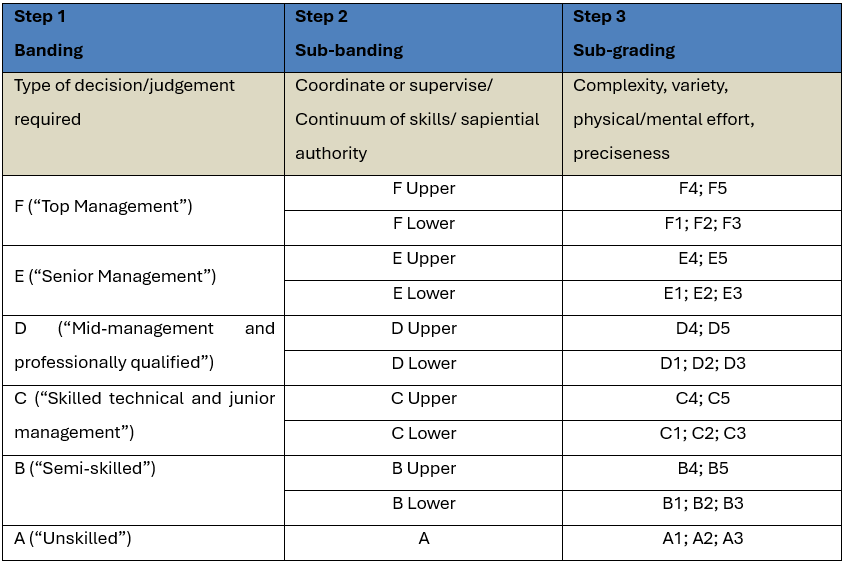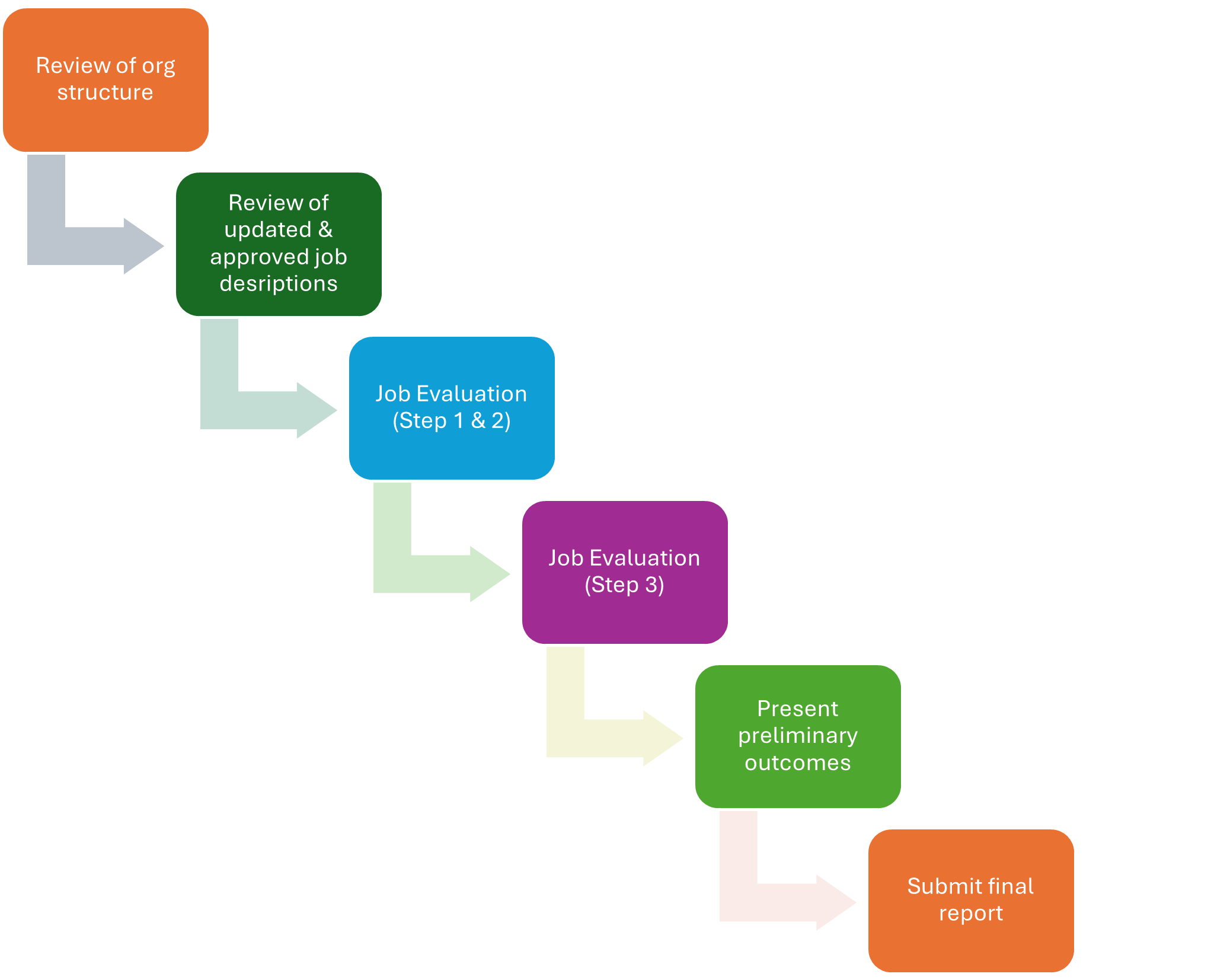Paterson Job Evaluation Methodology
The Paterson Job Evaluation Methodology was developed in the 1950’s by Dr. TT Paterson. The system is relatively easy to use after undergoing the training and is cost-effective compared to other systems.
The Paterson Job Evaluation Methodology is a systematic approach used to assess and rank jobs within an organisation based on the level of decision-making and responsibility required by each role. This system is internationally recognised and implemented in many countries across the world. It is commonly accepted by Unions, the CCMA and Bargaining Councils.
Many different job evaluation methodologies are available (e.g. Hay, Castellion, TASK etc). All of these methodologies are comparable, and tables are available to compare for example Hay and Paterson Job Evaluation outcomes.
Methodology
Paterson groups jobs into six broad bands (A to F), each reflecting a different level of complexity, skill, and accountability as depicted below. We apply the job grading rules to the content of the job descriptions after studying each job description in detail. It is a “manual” process of interpretation instead of a computerized programme/software.
Three (3) steps are used for Paterson Job Evaluation:
-
- Broad banding – ranking the jobs from A – F by applying the Paterson Job Evaluation rules. Each band represents a different level of decision making:
- Band A – Defined (routine, repetitive work).
- Band B – Controlled (decisions within clearly defined parameters).
- Band C – Routine (predictable, process-based decisions).
- Band D – Interpretive (discretion in applying rules/policies).
- Band E – Programming (strategic interpretation & innovation).
- Band F – Policymaking (corporate-level decision-making).
- Sub-banding – determining whether the position is in the “upper” or “lower” sphere of the band by considering the coordination/supervision of positions in the same band.
- Sub-grading – the next step consists of comparison of the positions in the band (e.g. comparing all the B-Lower positions to each other to determine the B1, B2 and B3, based on factors such as complexity, variety, physical/mental effort and precision required to do the job). Internal consistency is of utmost importance during this step.
- Broad banding – ranking the jobs from A – F by applying the Paterson Job Evaluation rules. Each band represents a different level of decision making:

The methodology focuses on the type and complexity of decisions made at each level, rather than on qualifications or experience of the jobholder (the focus is thus on the inherent requirement of the position and not the job incumbent skills, abilities and performance). Vacant positions can therefore also be graded.
The evaluation is typically conducted by a trained job evaluation consultant or committee to ensure consistency, fairness, and alignment with organisational structure and strategy. The outcome assists in determining equitable grading, pay structures, and career progression paths.
Requirements for doing Paterson Job Evaluation
Updated job profiles/descriptions are required to do the job evaluation & grading. The grading is done based on the content of the job description. It is therefore not relevant whether the position is filled or not and interviews with the job incumbents are usually not necessary unless the content of the job profile needs to be clarified.
Outcome of Paterson Job Evaluation
The outcome of the job evaluation & grading is job grades for each position, e.g. Administrator – B2 or Human Resource Manager – D3.
Salary data is not provided as part of the job evaluation/grading. Internal and/or external salary benchmarking would be required as a separate step in the process should this be required or if salary scales are required.
Timeframes
The timeframes for Paterson Job Evaluation depend on the volumes of positions/jobs that need to be graded and the availability of updated job descriptions.
Process flow
A typical process flow for Paterson Job Evaluation is depicted below.

Beyond Corporate Consulting Inc’s expertise in this area
Beyond Corporate Consulting Inc. brings over 15 years of specialized expertise in the Paterson Job Evaluation methodology. Having successfully completed awarded projects for both public and private sector organizations, we have graded literally thousands of positions across diverse industries. Our deep knowledge is further demonstrated through the workshops we regularly present on Paterson Job Evaluation, empowering HR professionals and managers to apply the methodology effectively. Notably, we collaborated closely with a senior Commissioner of the CCMA on an extensive job analysis and grading project in Mpumalanga province, underscoring our credibility and professional stature. We proudly hold numerous reference letters from satisfied clients, reflecting our commitment to quality, accuracy, and client satisfaction in every engagement.
